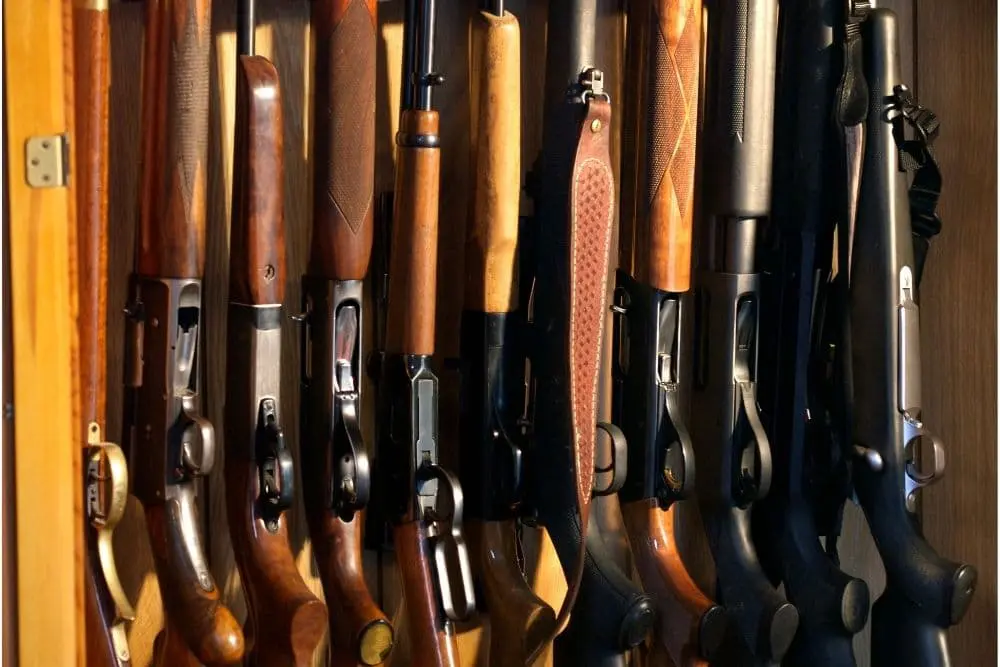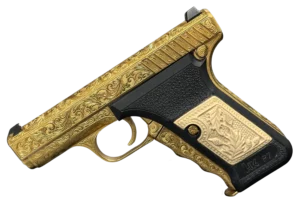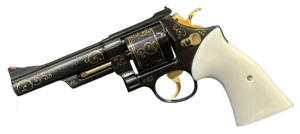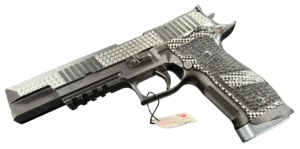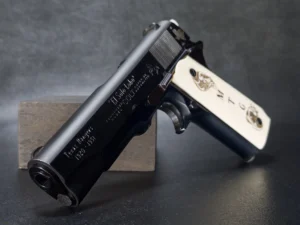- Collectible rifles aren’t just about age — they’re about stories, scars, and the hands that held them: Rarity, condition, and historical significance all matter, sure. But the magic lives in the details: a matching serial number, a worn stock that’s seen something, or a rifle that quietly sat in a soldier’s hands a century ago.
- Starting a collection doesn’t mean buying everything in sight — it means chasing what makes your heart race: Pick an era. Pick a model. Ask questions. Make mistakes. The absolute joy isn’t in owning the most rifles — it’s in finding the right ones that feel like they belong with you.
- Caring for old rifles isn’t just maintenance — it’s respect: These aren’t just hunks of wood and metal. They’ve made it this far, and your job is to help them make it further. Keep them safe. Keep them clean (but not too clean). And above all, don’t erase the character that makes them what they are.
There’s something about collectible rifles that pulls you in.
Maybe it’s the weight of the history they carry — or the thought that this exact piece of steel and walnut might’ve been shouldered by a soldier, a pioneer, or someone who just loved the feel of a finely made tool. These rifles aren’t just museum pieces. They’re relics, time machines, maybe even quiet storytellers if you know how to listen.
And let’s be honest — if you’re even a little into history, craftsmanship, or the idea of owning something scarce, collectible rifles are a dangerously addictive rabbit hole.
So, what makes a rifle collectible? Why are some rifles worth thousands, while others gather dust at the back of a pawn shop? Whether you’re new to this or already deep in the game, let’s walk through what makes a rifle collectible — and why they matter.
So… What Makes a Rifle “Collectible”?
Let’s start by ditching the idea that older automatically means better. Age helps, sure — but it’s not the whole story.
Here’s what moves the needle:
- Rarity. The fewer there are, the more folks want them, especially if they weren’t mass-produced or had a short production run.
- Condition. All-original, unmolested rifles in great shape? That’s collector gold. It’s even better if the wear tells a story, not just abuse.
- Historical Significance. Used in a war? Part of a significant event? Owned by someone interesting? Suddenly, it’s not just a rifle — it’s a relic.
- Maker’s Name. Big names like Winchester, Springfield, or Mauser tend to carry weight. Some collectors delve deeply into a single brand or model line.
- Provenance. Fancy word, but it just means: can you prove where it came from? Got documents, a story, a name attached to it? That adds significant value.
None of these exist in a vacuum. A rifle could be dirt rare but in awful shape, and its value might not be much. But when do these elements align? You’ve got a real gem on your hands.
Why These Rifles Matter — Beyond the Price Tag
Here’s the thing that’s easy to forget when you’re knee-deep in serial numbers and auction listings: these rifles lived a life before they landed in your safe.
Take, for instance, a Civil War-era Springfield. That isn’t just some old rifle. It’s a piece of a soldier’s story — maybe someone who fought at Gettysburg or trudged through mud and misery in some nameless skirmish. It might still smell faintly of black powder and campfire smoke (or maybe that’s just your imagination running wild, which is fine too).
Then there are the rifles from World War II. M1 Garands. Lee-Enfields. Mosin-Nagants. These rifles were carried across Europe, through North Africa, the Pacific — each one with dings, scratches, and wear that tells a quiet version of a much louder story.
Or go further back, to the American frontier. Winchester Model 1873s. Sharps rifles. Guns that weren’t just tools — they were lifelines—carried by ranchers, lawmen, and outlaws. The so-called “Wild West” lives on through these guns, in a way Hollywood never quite gets right.
Point is, these rifles don’t just sit there. They whisper. And collecting them? It’s a way to listen.
What Collectors Look For (Besides the Obvious)
Alright, let’s dig a little deeper. Beyond the big-ticket items, such as rarity and condition, what else draws collectors in?
- Matching Numbers. If the receiver, bolt, barrel, and stock all have the same serial number, jackpot. It means it hasn’t been cobbled together.
- Original Finish. Re-blued guns can look nice, but they’re like repainted classic cars — purists usually frown.
- Correct Parts. You’d be surprised how many “original” rifles have modern screws, replacement barrels, or reproduction stocks.
- Unusual Variants. Maybe it’s a prototype. Maybe it’s a transition model. Perhaps it was only issued for a six-month period in one country. That kind of oddball stuff? Catnip for collectors.
Also — weirdly enough — some guns that were hated in their day become highly collectible later. Time has a funny way of rewriting reputations.
Rifles with Stories Worth Telling
Let’s name-drop a few legends — rifles that just about every serious collector has either owned, wanted, or obsessed over at some point.
Winchester Model 1873
“The Gun that Won the West.” It’s iconic. Reliable, lever-action magic. These were everywhere in the late 1800s, from cattle drives to saloons. If you’re starting a collection with Americana in mind, this rifle’s a must.
Springfield M1903
A bolt-action beauty used in both World Wars. Crisp lines, great shooters, historically loaded. There’s something deeply satisfying about the M1903’s heft and precision.
Sharps Rifle
If you’ve seen Quigley Down Under, you know the legend. But even outside Hollywood, the Sharps earned its place with long-range accuracy in the Civil War and on the frontier.
Lee-Enfield No. 4 Mk I
A British classic. Smooth bolt. Rugged as hell. Carried through the mud and blood of Europe, Africa, Asia. A staple of WWII collections — and still surprisingly affordable.
These rifles aren’t just display pieces. Many are still perfectly functional. And that’s part of the magic — they’re living history, not just wall art.
Thinking About Starting Your Collection?
Welcome to the rabbit hole.
First piece of advice? Slow down. It’s tempting to buy a dozen guns right off the bat — especially when you start browsing auctions or forums. But here’s what’ll help you avoid buyer’s remorse:
- Read—a lot. Get your hands on reference books. Talk to other collectors—Lurk on gun forums. Learn the difference between a parts gun and a matching-number beauty.
- Pick a Focus. You don’t need to collect everything. Choose an era (WWII?), a brand (Mauser?), a type (lever-actions?). It makes your collection feel more coherent and easier on your wallet.
- Condition Over Quantity. One sharp, all-original rifle beats five that are Frankensteined together. Trust me.
- Don’t Be Afraid to Ask Dumb Questions. Everyone started somewhere. Most experienced collectors love to share their knowledge, especially if you’re genuinely curious.
And yeah, the first time you hold a rifle you researched for months and finally tracked down? It’s pure magic.
Legal Stuff You Gotta Know (Sorry, It Matters)
Not the sexiest section, but skip it at your peril.
Gun laws are a minefield — and they change depending on where you live. What’s legal in one state might get you in hot water somewhere else. So, before you buy anything:
- Check Local and Federal Laws, especially those related to antique versus modern firearms, shipping, background checks, and storage.
- Mind the Import Rules. Some rifles, particularly military surplus, come with quirks due to import stamps or parts swaps.
- Paperwork Matters. Always get a bill of sale. If there’s documentation on a rifle’s history, hang onto it. That’s provenance.
And while we’re at it, don’t mess with shady sellers. If something seems too good to be true, there’s a good chance it is.
Caring for These Old Beauties
Once you’ve started your collection, the next step is to keep it in great shape without accidentally ruining its value.
Here’s what most serious collectors do:
- Skip the Overcleaning. Don’t polish away patina. That wear is part of the story.
- Use the Right Oils. Light gun oil is fine, but avoid anything too aggressive. WD-40 is not your friend here.
- Control the Climate. Moisture is the enemy. Dehumidifiers, silica gel packs, and gun safes with climate control? Yes, please.
- Display Carefully. Suppose you’re showing them off (and why wouldn’t you?), use UV-protected glass and secure mounts. Keep little hands and curious guests away.
Think of yourself less as an owner and more as a steward. These rifles will outlast you if you treat them right.
The Online Collecting Scene (Yes, It’s a Thing)
Not gonna lie — the internet changed the game.
Forums like Gunboards, The High Road, or even dedicated subreddits are gold mines of information. You’ll find everything from arcane serial number ranges to passionate debates about bluing techniques.
Also, check out:
- The American Society of Arms Collectors
- The NRA Collector’s Division
- Auction houses like Rock Island Auction and Morphy’s
These communities are filled with folks who love to talk shop, share pics, and occasionally humblebrag about their latest finds.
And you’ll learn stuff you didn’t even know you needed to know.
Final Thoughts (That Aren’t Final)
Collecting rifles isn’t just about ownership. It’s about connection — to history, to craftsmanship, to the people who made and used these tools in times we can only imagine.
You might start with one rifle because it looked cool on an auction site. But before long, you’ll be squinting at proof marks, arguing about whether a barrel band is “correct,” and planning road trips to gun shows.
It’s a hobby. It’s a passion. And weirdly enough, it’s a way of honoring the past — one trigger pull, one cleaned bore, one preserved stock at a time.
So, welcome. You’re in good company.
And you’re just getting started.
Frequently Asked Questions
Not even close. Age helps, but it’s only part of the equation. What counts? Rarity, condition, historical importance, and whether the rifle still has its original parts. A beat-up antique might be old, but that doesn’t mean it’s valuable.
Provenance is just the fancy word for the rifle’s backstory — where it’s been, who owned it, what it was used for. A letter from the original owner, military records, and even old photos can help prove a rifle’s history. Collectors go wild for that stuff. Documentation isn’t just paperwork — it’s part of the value.
Start small. Read a lot. Lurk on collector forums, check out auction catalogs, and get a feel for what excites you. Don’t try to collect everything — pick a theme or a period. And remember: a handful of great rifles beats a room full of junkers every time.
Buying too fast and not asking enough questions. Or assuming every old rifle is worth something. Spoiler: some aren’t. Take your time, learn the red flags, and don’t let “shiny” cloud your judgment. Oh — and don’t overclean anything. That patina is part of the story.
Think cool, dry, and secure. Gun safes with dehumidifiers are your best friend. If you’re displaying them, use UV-protected glass and keep them out of direct sunlight. And always — always — make sure they’re not accessible to little hands or uninvited guests.


